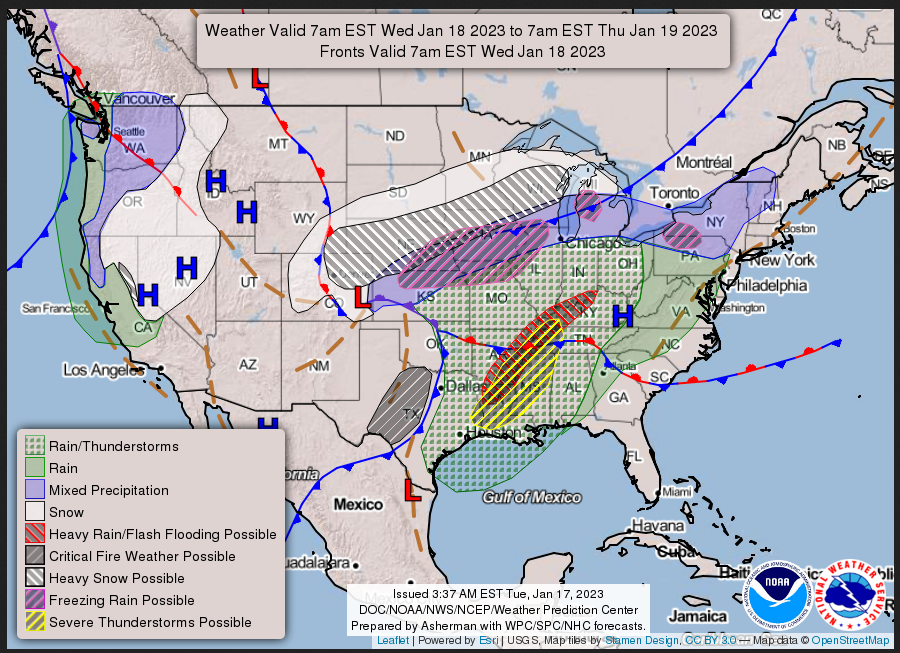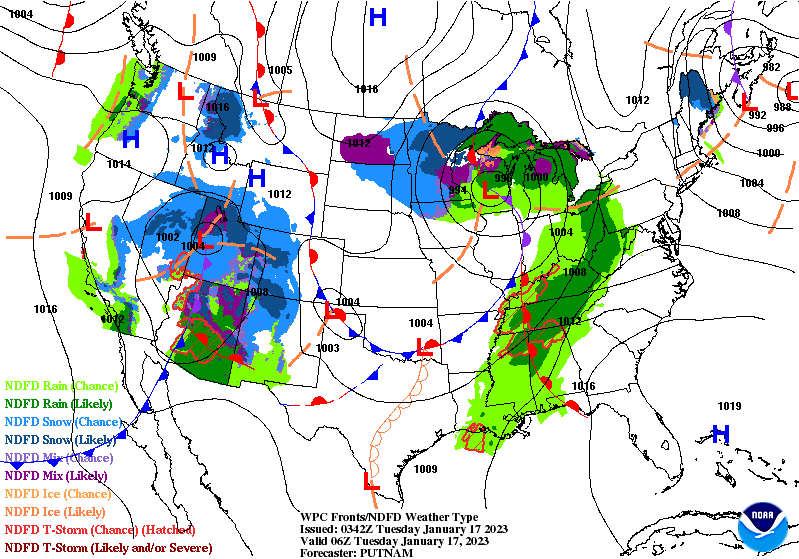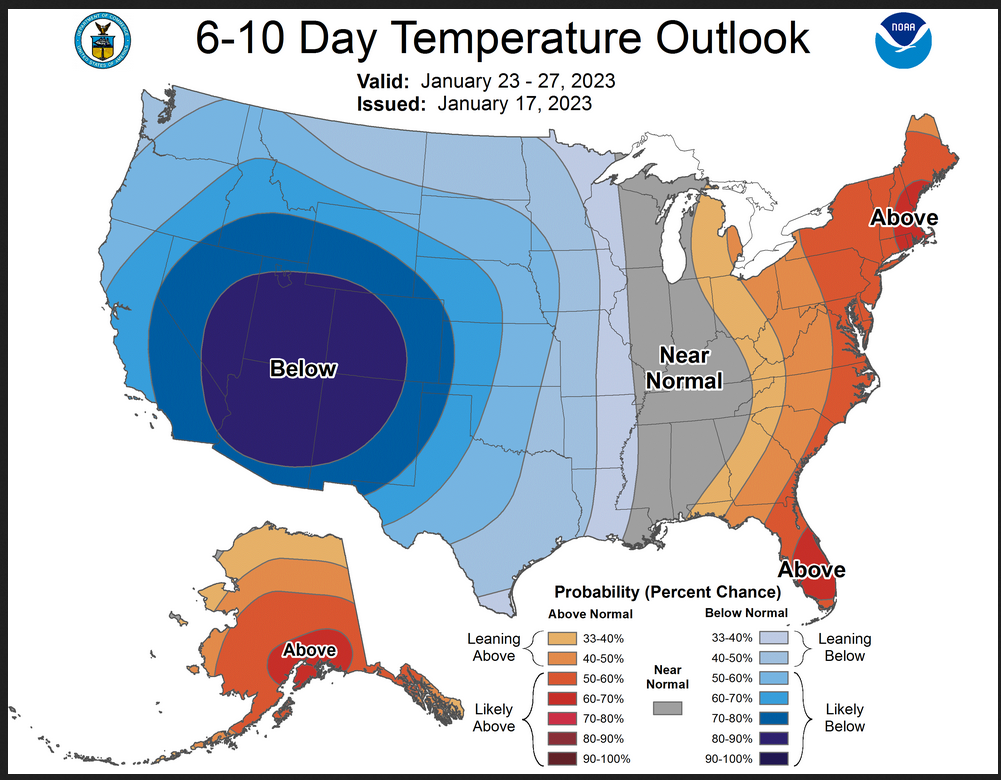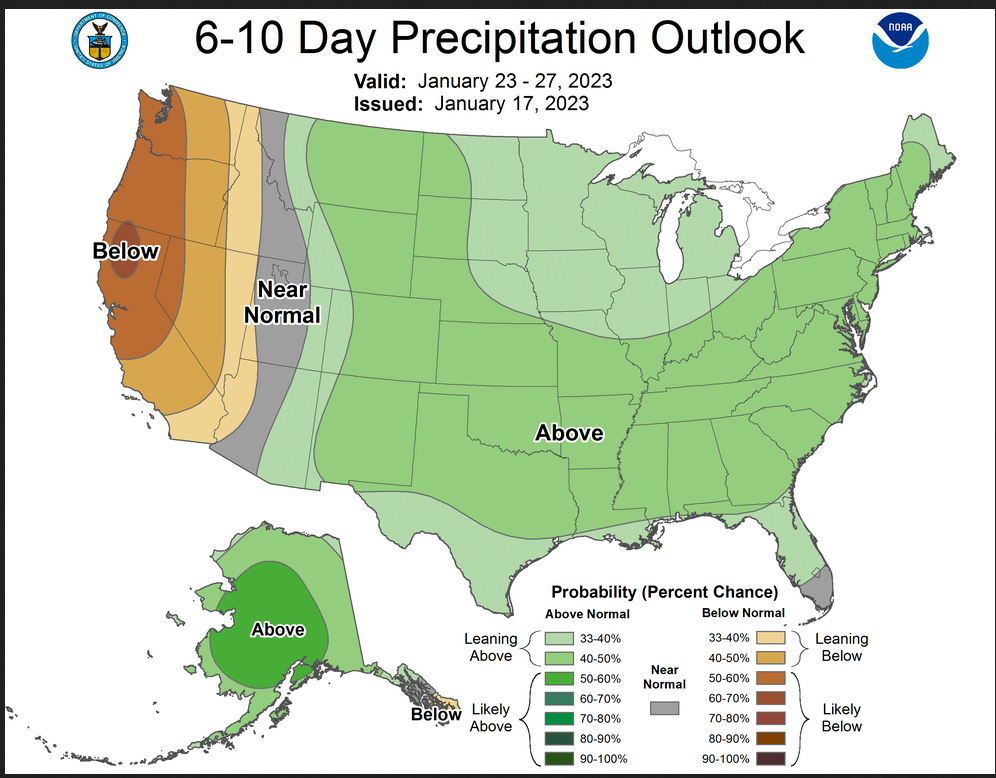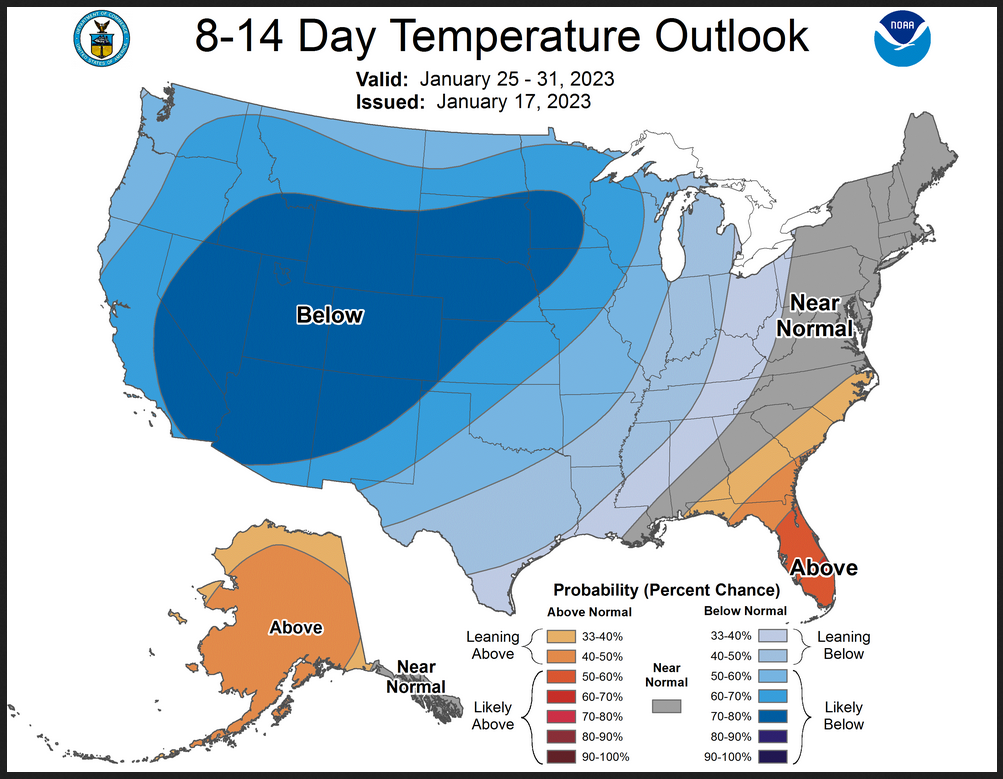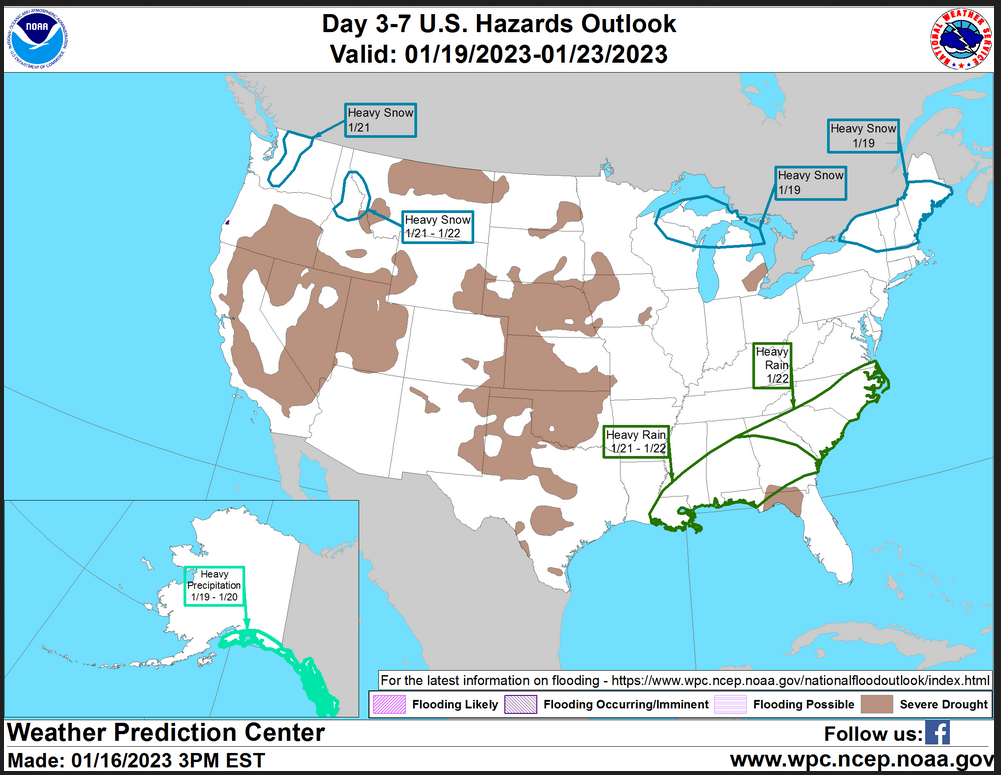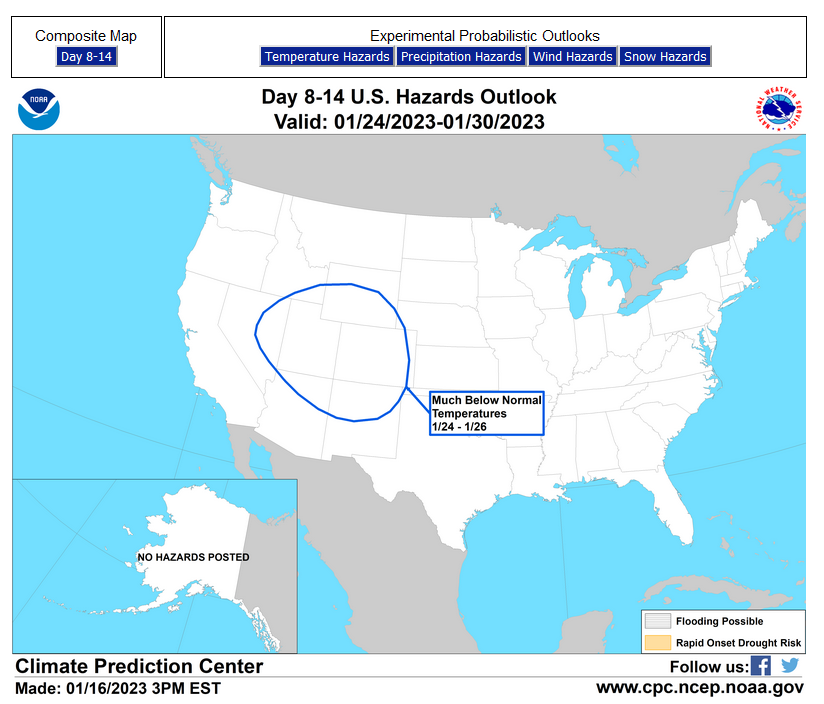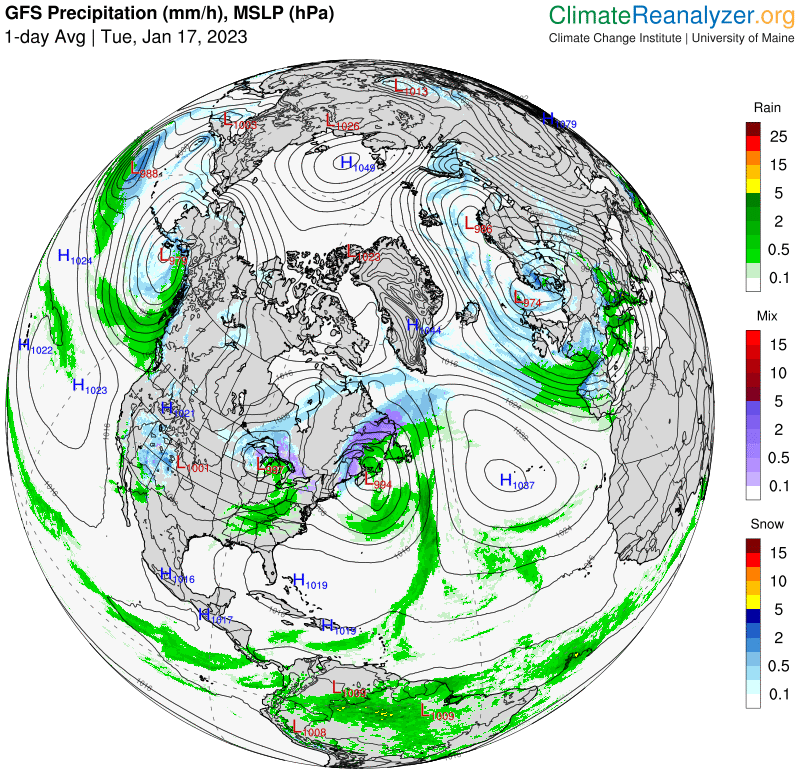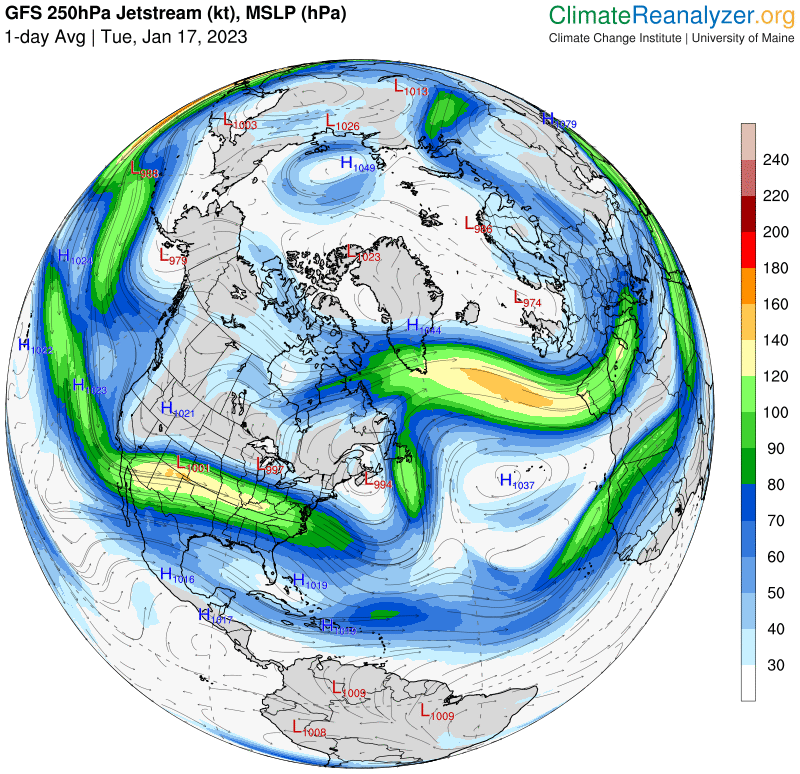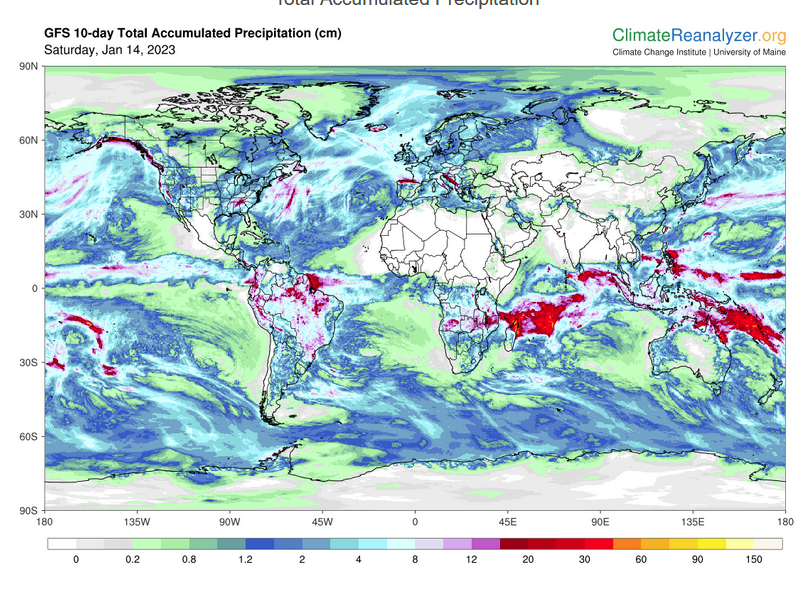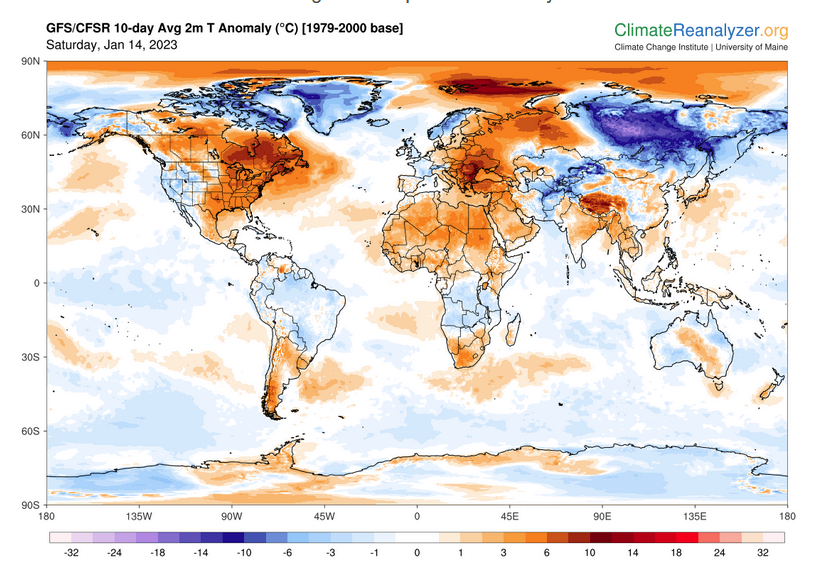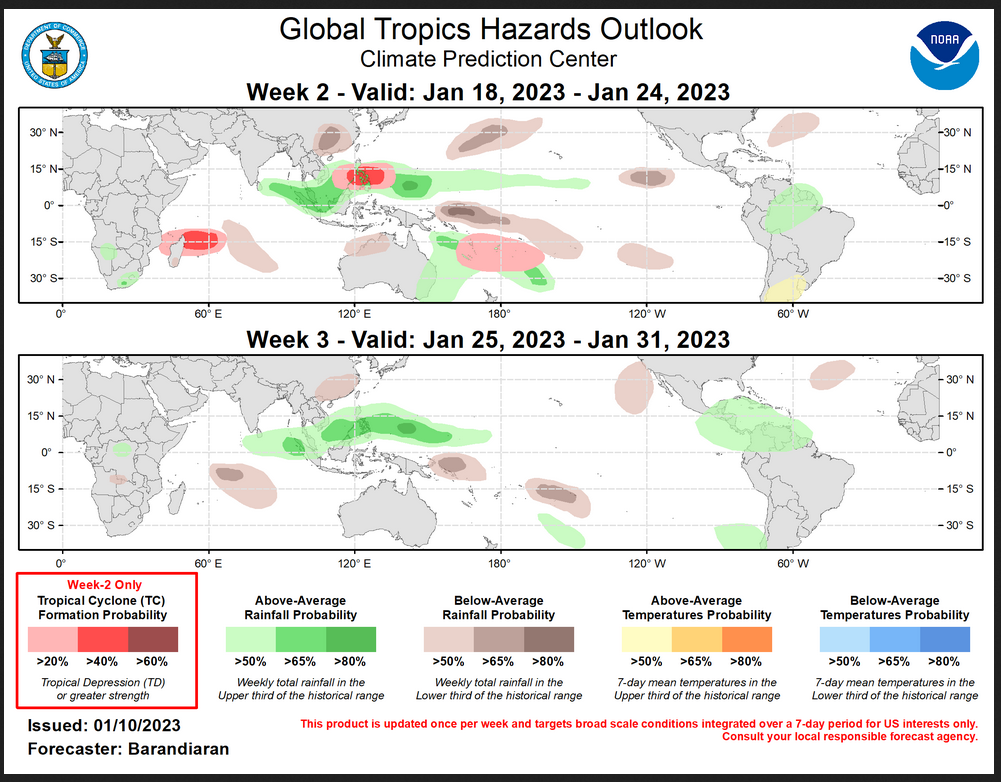Updated at 3:40 p.m. EST Tuesday, January 17, 2023
Here is what we are paying attention to in the next 48 to 72 hours. This article also includes World weather forecasts.
We start with the U.S. Information.
Short Range Forecast Discussion NWS Weather Prediction Center College Park MD 303 PM EST Tue Jan 17 2023 Valid 00Z Wed Jan 18 2023 - 00Z Fri Jan 20 2023 ...Potential for severe thunderstorms and flash flooding from the Lower Mississippi Valley into the Ohio Valley on Wednesday... ...Winter storm to impact the Central High Plains into the Upper Midwest through Thursday morning... ...Light to moderate rain/snow to affect the Pacific Northwest into northern California Wednesday/Thursday...
First, the 48-Hour Forecast (It is a 48 to 72 Hour Forecast actually)
Daily weather maps. I try to keep the above maps updated. They only update twice a day and in some cases once a day.
TUESDAY
WEDNESDAY
THURSDAY
I will be doing the updating during the period described in the title of the article but if you happen to read this article later you can get updates by clicking HERE.
This animation shows how things may play out over the next 60 hours. To update click here.
ATMOSPHERIC RIVERS
Continuation of the NWS Short Range Forecast (It is updated by NWS twice a day and these updates can be found here. We post at least one of those updates daily, sometimes both. The Highlights are shown in the lede paragraph of this article.
A storm system over the Four Corners region this afternoon will move into the Great Plains tonight, spreading snow into the Central High Plains. Snow will develop over northeastern Colorado late this evening to the north of a developing surface low, forecast to move east-northeastward over the next 12-36 hours. Areas of heavy snow with snowfall rates of 1 to 2 inches per hour will be possible within the heaviest snow bands from northeastern Colorado into Nebraska and northwestern Iowa along with storm totals over 10 inches from northeastern Colorado to the Missouri Valley. Areas of freezing rain are expected south of the heaviest snow from southeastern Nebraska into central/southern Iowa. Needless to say, travel will be difficult across portions of the Plains/Midwest with this storm system. Ahead of the storm system's cold front, showers and thunderstorms will develop from portions of eastern Texas into the Lower Mississippi Valley Wednesday morning, expanding north and east during the day. High temperatures ahead of the cold front and south of the warm front will be 10 to 20 degrees above average which will help support the potential for severe thunderstorms and flash flooding. The greatest threat for flash flooding and severe thunderstorms will be from eastern Texas/Louisiana into the Lower Mississippi and Ohio Valleys Wednesday and Wednesday night. Behind the cold front, a combination of gusty winds and low relative humidity will pose a Critical Fire Weather area (per SPC) across central to western Texas on Wednesday. Above average warmth will spread into the Midwest and Mid-Atlantic on Thursday along with areas of rain. A wintry mix of snow, sleet and freezing rain is expected to spread into interior portions of the Northeast Thursday afternoon, but the threat for severe storms and flash flooding will be diminished compared to Wednesday's threats. Across the West, an upper level disturbance will send a Pacific cold front into the Northwest on Wednesday. Coastal rain and mountain snow can be expected to push south and east Wednesday night and Thursday with locally moderate snowfall accumulations for the higher elevations. The heaviest rain of 1 to locally 2 inches is expected from the coasts of Washington, Oregon and northern California with lighter rainfall totals anticipated farther south down the West Coast as the upper level storm system moves into the Great Basin.
Below is the current five-day cumulative forecast of precipitation (Updates can be found HERE)
Now we look at Intermediate-Term “Outlook” maps for three time periods. Days 6 – 10, Days 8 – 14, and Weeks 3 and 4. An outlook differs from a forecast based on how NOAA uses these terms in that an “outlook” presents information as deviation from normal and the likelihood of these deviations.
Below are the links to obtain updates and additional information. They are particularly useful if you happen to be reading this article significantly later than when it was published. I always try to provide readers with the source of the information in my articles.
HAZARDS OUTLOOKS
Click here for the latest complete Day 3 -7 Hazards forecast which updates only on weekdays. Once a week probably Monday or Tuesday I will update the images. I provided the link for readers to get daily updates on weekdays. Use your own judgment to decide if you need to update these images. I update almost all the images Friday Night for the weekend edition of this Weather Report. So normally readers do not need to update these images but if the weather is changing quickly you may want to.
Month to Date Information
Temperature month to date can be found at https://hprcc.unl.edu/products/maps/acis/MonthTDeptUS.png
Precipitation month to date can be found at https://hprcc.unl.edu/products/maps/acis /MonthPNormUS.png
World Forecast
Below are the current precipitation forecast and the 10-Day forecasts for temperature and precipitation. Updates and additional information can be obtained HERE
Much of this information is provided by the University of Maine. They draw upon many different sources.
This graphic updates on Tuesdays) If it has not been updated, you can get the update by clicking h ere Readers will only have to do that if they are reading this article much later than the date of it being published.
–
| I hope you found this article interesting and useful. |


